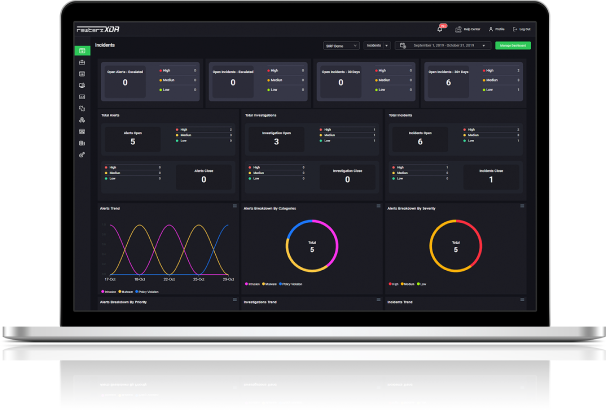
Severity
Meduim
Analysis Summary
AsyncRAT is an open-source tool designed for remote monitoring via encrypted connections. However, it could be utilized by threat actors as it provides keylogging, remote access, and other functionality that could damage a victim's computer or system. This tool can send malicious files to the system that can be a source of other malicious software once executed. These can also be used to transfer malicious programs into USB drives and can infect other systems. Numerous malware campaigns and threat actors have utilized AsyncRAT in various recent attacks. Recently, a social engineering campaign that targeted Thailand Pass (an online travel agency) consumers was observed. Additionally, the Follina Outbreak in Australia spread AsyncRAT as a malicious payload. AsyncRAT can be delivered through several techniques, including spear-phishing, malicious advertising, exploit kits, etc.
One of the key features of AsyncRAT is its use of advanced encryption and obfuscation techniques to evade detection by anti-malware software. It also can update itself and download additional modules or plugins, which can be used to add new features or expand its capabilities. To protect against AsyncRAT and similar malware, it's important to maintain up-to-date software and security patches, use strong access controls and passwords, and regularly back up important data. It's also recommended to use anti-malware software and to be cautious of suspicious emails or links. If a system is suspected of being infected with AsyncRAT, it's important to isolate it from the network and seek the assistance of a security professional.
Impact
- Unauthorized Access
- Information Theft
Indicators of Compromise
MD5
- db361206702d61f0beff5f87508152e5
- 0de5b94b56fbfabfadb685d981e5ddf3
- 4df0bf4c7b6b334992a5d69933654417
- 85a84eff8bf73e4661824726438e21ee
- 114cfb0a1a06cb6c621edfbe35c6de7d
SHA-256
- 333bb61be5eb4be9c261a3f99c144cf7be0cee3c00898c1ac6a6c886469e1ab1
- 07d846946a8e0531e4f8ee0fe1056ba265f1d2da017f32ffbb4cf65f82199a55
- 6bfd9a9da18a908132c425c3d0e853d5f95a1863096ac62c380a3b5a50d8025a
- 78e20b9f9e36578c45d1c0e28e68299620ce085953ab3e468ab10f633e586cfc
- a07479025c1100c57c7240d438305e85db5ea96d4d31f7103c3f27f044e19bd3
SHA1
- 88e52c01ac24fc062221841948700c482090b145
- cec8aabf31a9b99d090f9a28cd6bbfeaef5dcd6e
- 961c104a65f1f3db643c1b5fa1acf877255e03bf
- a2b5401bbe15125c0d8d9419d87425366c991fa8
- c8f44299a96807e741507423fae47e46afa8d434
Remediation
- Block all threat indicators at your respective controls.
- Search for indicators of compromise (IOCs) in your environment utilizing your respective security controls.
- Do not download documents attached in emails from unknown sources and strictly refrain from enabling macros when the source isn’t reliable.
- Enable antivirus and anti-malware software and update signature definitions promptly. Using multi-layered protection is necessary to secure vulnerable assets.
- Patch and upgrade any platforms and software timely and make it into a standard security policy.
- Enforced Access Management Policies.
- Along with network and system hardening, code hardening should be implemented within the organization so that their websites and software are secure. Use testing tools to detect any vulnerabilities in the deployed codes.








